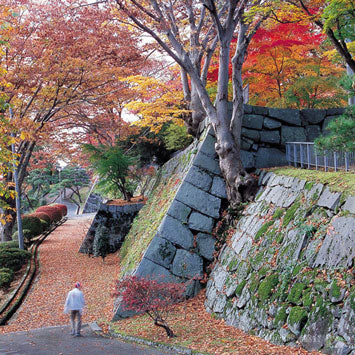
Shochu Gumi is our quarterly sake subscription service with 70 members throughout the country. Join today!
Filtration, or roka in Japanese, is a vital part of any brewing and distillation process. However, it is little talked about, or even mentioned, because it is a snoozeville topic compared to fermenting or aging. This quarter, I’m bringing you two shochus that highlight differing methods of filtration in shochu. Behold, the sexiest Shochu Gumi theme yet!
Whether we are talking sake, wine, whisky, or shochu, the filtering process is incredibly important. The way a drink is filtered helps determine the end result, in taste and especially mouthfeel. There are many methods of filtration throughout all beverages – making alcohol requires all sorts of ingredients, and depending on the maker, you want to get rid of some, or all of the residual components left over for the final product.
Vodka is the supreme example of an alcohol that is filtered to death, leaving absolutely no trace of human intervention or unique characteristics. As a result, it doesn’t taste like anything besides ethanol! Loosely filtered alcohol is a tradition found in many cultures around the world and these days, there is even a trend toward unfiltered whiskies.
In the world of shochu, carbon filtration is common (however the use of shirakaba white birch is prohibited from this), as is chill filtration which is often used for whisky and cognac. I asked our friend Christopher Pellegrini, Tokyo-based shochu expert, about this: “Chill filtration is the newer phenomenon, and it came about mostly for cosmetic reasons. Long chain fatty acids congeal, or ‘flock,’ much more readily in lower proof spirits like awamori and shochu, so distilleries use it as a line of defense against consumers calling up and complaining that their bottle is cloudy.”
This quarter’s theme was supposed to be muroka (unfiltered) shochus, as we thought Aokage Barley Shochu by Yanagita Distillery was unfiltered as soon as we opened the bottle. However, it’s even cooler, as we learned that it goes through the painstaking process of being filtered through horsehair!

Tadashi Yanagita holding the filter made of horsehair for Aokage shochu. Photo by Jamie Graves
Also, I’m really proud to have lined up an unfiltered bottle with cult status by Hawaiian Shochu Company for its mainland debut.
 Hawaiian sweet potatoes for Nami Hana shochu. Photo courtesy of Hawaiian Shochu Co.
Hawaiian sweet potatoes for Nami Hana shochu. Photo courtesy of Hawaiian Shochu Co.
After taking a sip of both these unique drinks, I hope you will sigh and say, “Ohhh la la, sexy!”
Kanpai,
Kayoko
Co-Founder + Shochu Director, Umami Mart
+++
Nami Hana Sweet Potato Shochu
Hawaiian Shochu Co. (Haleiwa, Oahu)
Distilled from 82% imo (sweet potato) + 18% kome (rice)
ABV 30% / Koji: Black / Distillation: Atmospheric
Aged in Ceramic vats + iron tanks lined with enamel
Shochu Gumi Mainland Exclusive!
 Ken Hirata of Hawaiian Shochu Co.
Ken Hirata of Hawaiian Shochu Co.
Inspired by poi, a Hawaiian dish made of taro, Ken Hirata decided to start making shochu in Hawaii using locally sourced sweet potatoes. After an apprenticeship at
the famed Manzen distillery in Kagoshima, Hirata moved to Haleiwa, near the
North Shore of Oahu, to open Hawaiian Shochu Company. I was lucky to visit the
distillery in 2018, check out all the photos on our blog!
 Ceramic vats for fermenting and aging shochu.
Ceramic vats for fermenting and aging shochu.
This bottle of Nami Hana is Batch #17, made with sweet potatoes grown all over the Hawaiian islands. Hirata leaves Nami Hana unfiltered, so you’ll notice it is a little cloudy, with a peppery, earthy palate, and a dry, yet lingering body. When asked why he keeps his shochu unfiltered, Hirata responded, “For more aroma from the oil.” Hirata recommends drinking unfiltered shochu as freshly made as possible. Enjoy on the rocks with a spicy Sichuan feast of toothpick lamb and wontons with hot chili oil.From the distiller: Please shake lightly before you serve, and finish as soon as possible (within the month). Keep Nami Hana at room temp but please avoid direct sunlight.
Aokage Barley Shochu
Yanagita Distillery (Miyakonojo, Miyazaki)
Distilled from 100% mugi (barley), locally grown two-row barley
ABV 25% / Koji: White / Distillation: Atmospheric / Aged in enamel tanks
 Doorway to Yanagita Distillery. Photo courtesy of Yanagita Distillery
Doorway to Yanagita Distillery. Photo courtesy of Yanagita Distillery
The beauty of this shochu lies in the filtration process. Although all other shochus
that Yanagita produces are filtered with a machine, Aokage is hand-filtered through a rare tool made with hair from a horse’s tail. Horsehair is believed to attract oil, which is why it is used, and they take months to carefully scoop out as much oil from the batches of Aokage as possible.

Tadashi Yanagita mixing the moromi. Photo courtesy of Yanagita Distillery
I asked Tadashi Yanagita, fifth generation owner of the distillery why he filters Aokage this way: “If it is filtered by a machine, Aokage’s individuality would be lost.” Kagoshima No. 2 yeast is used for this shochu, and it is fermented at a very high temperature to create a unique aroma of freshly baked bread and tahini. Enjoy oyuwari (with hot water) to maximize its smooth and silky sweetness that lasts for a while. Drink this slightly cloudy drink with a ribeye cooked rare.
 Local two-row barley. Photos courtesy of Yanagita Distillery
Local two-row barley. Photos courtesy of Yanagita Distillery




Comments (0)
There are no comments for this article. Be the first one to leave a message!